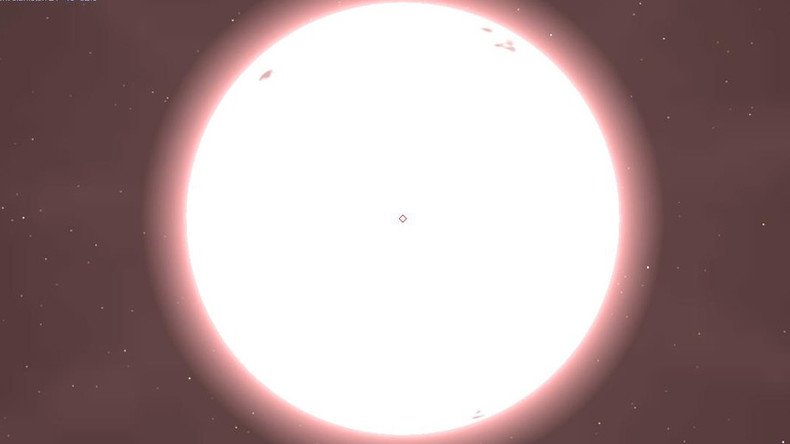Officially ‘weird’: Mysterious signals from dwarf star not signs of alien life

Strange signals emanating from a dwarf star are not evidence of extraterrestrial life. That’s according to astronomers who detected the unidentified radio signals, setting off public speculation that aliens were trying to making contact with Earth.
Scientists from the Arecibo Observatory in Puerto Rico revealed last week that they were baffled by signals detected on May 12 emanating from the star Ross 128.
Astronomers baffled by mysterious signals emanating from dwarf star https://t.co/rPaiCQktjXpic.twitter.com/x4UqucrgHl
— RT (@RT_com) July 15, 2017
The wide-band radio signal was considered unusual because not only did it repeat with time, it also slid down the radio dial, going from a higher note to a lower one.
While the team were quick to point out that it was highly unlikely the signals were from aliens, that didn’t stop curious conjecture around their discovery.
“Many people were more interested in the signals as potential proof of transmissions from an extraterrestrial intelligent civilization,” Professor Abel Mendez from the Planetary Habitability Laboratory wrote in a press statement.
“Statistically, this is always the last consideration, not because such civilizations are impossible, we humans are an example, but because other possibilities had frequently arisen and no extraterrestrial civilizations have been detected yet.”
Mendez is now confident that he and his team have solved the mystery of the signal, officially called “Weird!”
The #Weird!Signal was most likely caused by one or more geostationary satellites. The shape of the signal is still under investigacion.
— Prof. Abel Méndez (@ProfAbelMendez) July 21, 2017
After careful analysis of the observations, with assistance from the SETI Institute, the source of the signal was determined to be interference from a distant satellite.
“The best explanation is that the signals are transmissions from one or more geostationary satellites. This explains why the signals were within the satellite’s frequencies and only appeared and persisted for Ross 128; this star is close to the celestial equator where many geostationary satellites are located,” Mendez said.
The team fell short of explaining the shape of the signal and will continue to investigate this.
It is now seems clear that the Ross 128 Arecibo detections were due to transmissions from geosynchronous satellites https://t.co/rD45slSpT3
— Franck Marchis (@AllPlanets) July 21, 2017
The Weird! Signal https://t.co/ebk2o7pQJUpic.twitter.com/gTtQUF0Cd6
— Prof. Abel Méndez (@ProfAbelMendez) July 21, 2017
Before confirming the results publicly, Mendez took advantage of the huge media attention to gauge what the public believed was the most likely source of the signal.
Nearly 800 people, including more than 60 astronomers, participated in the informal survey.
The majority of those surveyed believed the signals were a result of some astronomical phenomenon. Interestingly, the possibility of radio interference or instrumental failures were considered least likely.
About one quarter of respondents said the most likely explanation of the signal was that of a communication with an Extraterrestrial Intelligence (ETI). A similar number, however, said this was likely only “in our craziest dreams.”
READ MORE: Alien hunters SETI crowdfunding campaign to ‘watch all of the sky all of the time’











